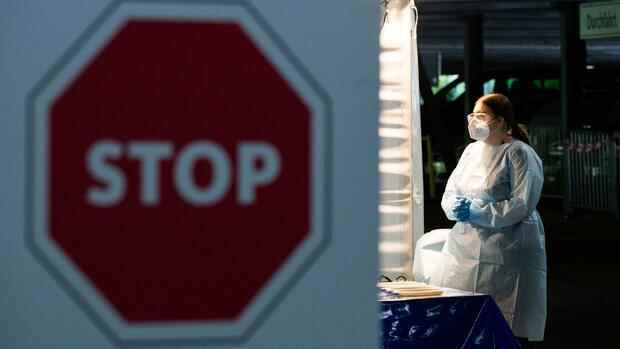In the fight against a fourth corona wave in Germany, non-vaccinated people have to be prepared for more test obligations.
(Photo: dpa)
The course of the corona infection curve over the past few weeks is reminiscent of a hammock in which politicians have made themselves a little too comfortable. At the beginning of September the number of new infections fell day by day, then remained stable for a while and is now increasing again at the same rate at which it had initially decreased.
Nobody really cared about it in the central political control centers, where nothing has been the same since the federal election. Chancellor Angela Merkel (CDU) is on a farewell tour.
Jens Spahn is waiting for his replacement in the Federal Ministry of Health – and possibly also for an opportunity to secure the CDU chairmanship. And the chairmanship of the Prime Minister’s Conference was held by two heads of state who are also vacating their posts: Berlin’s Governing Mayor Michael Müller (SPD) and Armin Laschet (CDU) for North Rhine-Westphalia.
The top staff of the pandemic republic was or is more concerned with their own future than with incidence figures, hospitalizations, vaccination rates and the many parameters, which, to be honest, many are fed up with. It seems a bit as if the public interest in the topic can be read from the height of the masks that slide under the nose in the subways and shops.
Top jobs of the day
Find the best jobs now and
be notified by email.
So it’s really no wonder that Germany has been rushing into the fourth wave for weeks without a guide and without a plan. Because the pandemic was never really gone. On the contrary: it returns with full force. The hammock threatens to wear out quite a bit at the right end – the infection curve is pointing steeply upwards again.
Third party vaccination campaign
It would be too short-sighted to immediately call for more stringent measures. The time when corona measures were tied to the seven-day incidence is over. Each federal state has developed its own concepts for assessing the situation – but mostly criteria such as the vaccination rate and hospitalization also play a central role. It would be wrong, however, to completely ignore the seven-day incidence, because it reveals not only what hospitalization could still follow, but also what politicians have missed out on.
For example, there is no effective campaign for the third vaccination, as was the case with the first and second vaccination. Studies indicate that protection in older age groups and in immunocompromised people decreases after six months.
This could be observed in Israel, for example, where a large part of the population has now been vaccinated a third time. In Germany, the Standing Vaccination Commission recommends booster vaccinations for people aged 70 and over and particularly vulnerable groups, but this has not yet had the decisive effect.
So far, only a quarter of this group have been vaccinated three times. And so the number of cases in this age group is increasing the most. In 60 to 79 year olds, the number of new infections has increased by 53 percent compared to the previous week, and in the group of over 80 year olds by almost 66 percent. Another driver of the number of cases are regions in which the vaccination rate is comparatively low.
The south-east of Germany is particularly affected – there, as in Saxony, Thuringia and Bavaria, fewer people are vaccinated than the national average. In some places, the seven-day incidence is over 400.
The high number of infections is also a drama for students under the age of twelve, for whom there is as yet no vaccine – and who have to be quarantined in the event of an infection. But once again there is no plan for the schools to get through the winter. And it will probably take a few more months before younger people can also be vaccinated.
Don’t just look at the numbers
It doesn’t help to look at the numbers without doing anything. Countries like Great Britain are already reaching their limits because of their vaccination quota, which is even higher than in Germany. England’s Prime Minister Boris Johnson celebrated Freedom Day in the summer and lifted all corona measures. That now takes revenge in the cold season. At more than 200 people a day, the number of deaths is back to seven months ago, and hospital admissions are also increasing dramatically.
Those who have always used the country as a model for a Freedom Day must now also point to Great Britain and see that it is a warning example of a vaccination rate that is too low. Autumn and winter are – this insight is now slowly returning – uncomfortable.
More: Concern about fourth wave: countries continue to insist on corona measures
